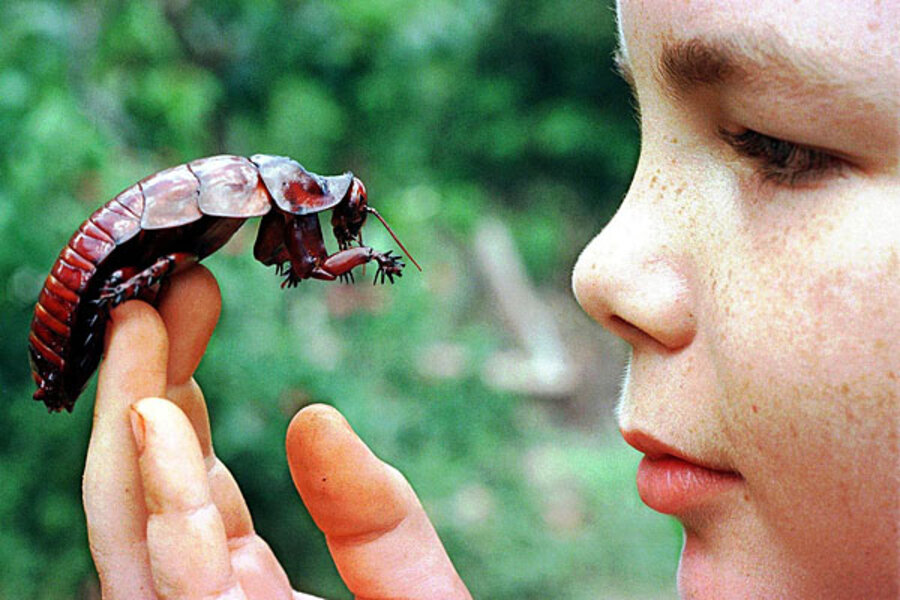Robots mimic cockroach's disappearing act
Loading...
A robot that copies how cockroaches and geckos can disappear under ledges in the blink of an eye could lead to search-and-rescue droids with animal-like maneuverability, researchers say.
Scientists regularly look to nature for inspiration when designing robots, with the hope of learning from millions of years of evolution. Recent examples include droids that mimic the cheetah's stride or the legs of velociraptor.
While monitoring a cockroach with high-speed video cameras to see how it crossed gaps while running at high speeds, "we were surprised to find the insect gone," said researcher Robert Full, an integrative biologist at the University of California at Berkeley.
"After searching, we discovered it upside-down under the ledge," Full said. "After close inspection of the video, we saw that the cockroach was using its legs as grappling hooks by engaging its claws at the tip of the ledge."
[Bug Juice: Turning Roaches into Living Fuel Cells]
The scientists then saw that geckos in the lab could also run off ledges at full speed and carry out this pendulumlike flip, dubbed "rapid inversion," using hooklike toenails to swing themselves fully around to land firmly on the undersides of platforms. The researchers then contacted integrative biologist Ardian Jusufi who was studying geckos in the field in the rainforests of Singapore to see if the lizards dove over ledges the same way in the wild.
"We wondered whether this was a behavior really used in nature to escape predators," Full said. "To his surprise, he found that a gecko chased to the end of a broken Bird's Nest Fern leaf also disappeared. Using high-speed video, he showed that geckos used rapid inversion, just as observed in the laboratory."
Apparently the animals can grab an edge with their claws — sometimes using only one leg, in the case of roaches — and retain 75 percent of their running energy as they swing like pendulums beneath it. They experience about three to five times the force of gravity with the flip, similar to what humans feel at the bottom of a bungee jump, said researcher Jean-Michel Mongeau at the University of California at Berkeley.
These findings not only explain why tiny animal pests we chase at times seem to disappear, but helped develop a robot capable of the maneuver. The researchers modified their six-legged cockroach-inspired DASH — Dynamic Autonomous Sprawled Hexapod — by attaching Velcro hooks to its back legs. After they glued Velcro loops near and underneath a ledge, they found DASH could duplicate the acrobatic move.
"The flip demonstrates a principle of how we might make small robots more agile and maneuverable," Full said. "Ultimately, if we want search-and-rescue robots to assist first responders in the rubble left after an earthquake, tornado or explosion, or have greater capability to more rapidly detect chemical, biological or nuclear hazards, we must build far more agile robots with animal-like maneuverability."
After cockroaches and geckos flip over ledges, they can then continue to run upside-down under surfaces. "The robot might be able to do so in the future" as well, Full said.
The scientists detailed their findings online June 6 in the journal PLoS ONE.
Follow InnovationNewsDaily on Twitter @News_Innovation. We're also on Facebook & Google+.
- Tiny Robot Walks on Water by Mimicking Nature
- Top 7 Useful Robots You Can Buy Right Now
- 5 Reasons to Fear Robots
Copyright 2012 InnovationNewsDaily, a TechMediaNetwork company. All rights reserved. This material may not be published, broadcast, rewritten or redistributed.





